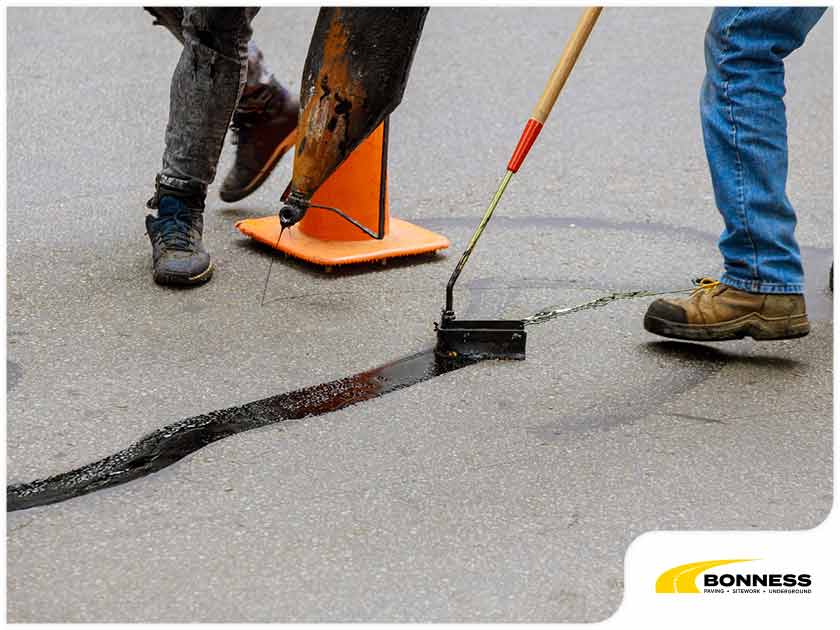
Asphalt is used in roads, driveways and pavements. It’s one of the most durable building materials, but it can develop cracks due to various reasons. Experts typically use sealing, filling or a combination of these two methods to repair cracks in asphalt pavements.
What Is Crack Sealing?
Crack sealing spreads a thin layer of asphalt-based material over the crack to smoothen it and effectively seal the crack. Hot sealant is applied along cracks to prevent them from expanding further because of moisture infiltration.
The crack-sealing layer is made from two ingredients: a hardener and bitumen. The hardener provides the resin-like properties that make the sealant adhere to the cracks while the bitumen provides strength and resilience.
When to Use Crack Sealing
Cracks with some edge deterioration and are less than ¾ inches in width are usually fixed through crack sealing. The seal can successfully cure and prevent water from seeping through the material and enlarge its width.
What Is Crack Filling?
Asphalt crack filling fixes bituminous pavement by injecting a rubberized asphalt mixture into the crack. The rubberized asphalt mixture is made from asphalt and rubber that hardens as it cures. This emulsified substance can effectively restore wide-gap cracks, but it requires more time to cure than crack sealants.
When to Use Crack Filling
Asphalt pavement cracks wider than ¾ inches typically need crack filling. The emulsified rubberized asphalt mixture removes the gap and binds the internal asphalt pavement cracks.
Keep in mind that crack fillers are more expensive than sealants. Plus, they need more personnel, equipment and curing time to fix cracks effectively. However, their resulting fixes work exceptionally well and last a long time.
If you need pavement restoration, repair and installation services, Bonness guarantees only the best results for your projects. Call us at (239) 597-6221, or fill out our contact form for inquiries and estimates.
